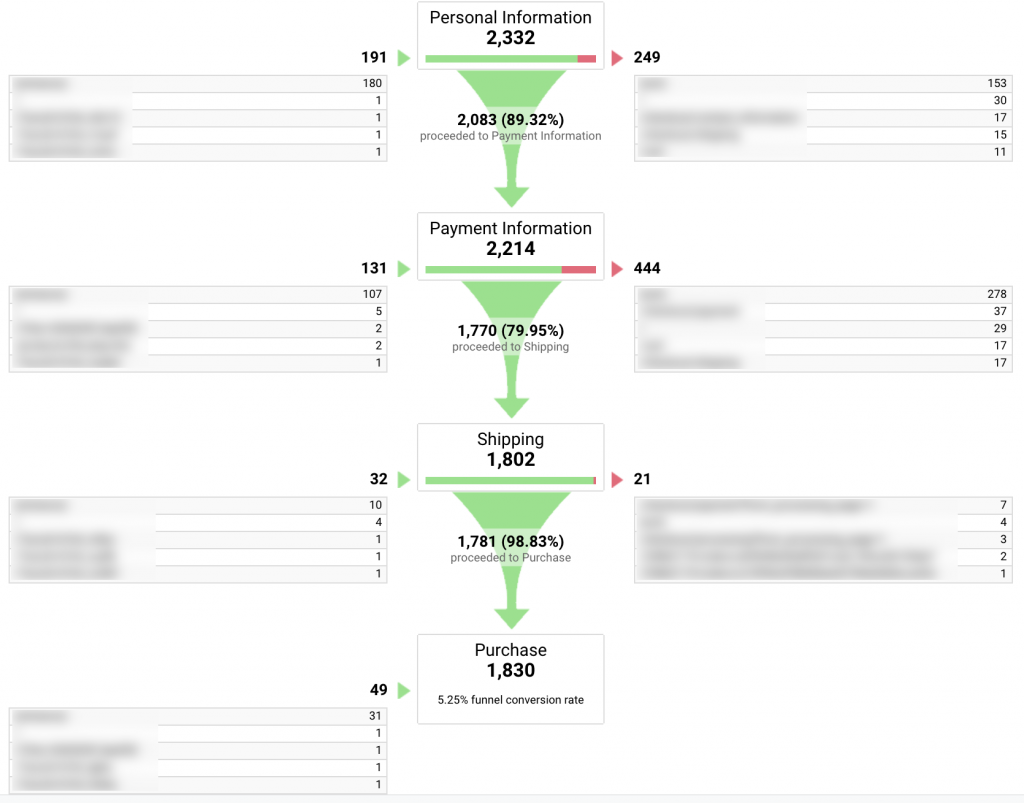Discovering What Data Is Google Analytics Goals Unable to Track
Discovering What Data Is Google Analytics Goals Unable to Track
Blog Article
Discover the Limitations of Google Analytics Goals: Introducing the Information Types That Remain Untrackable
As services increasingly rely on data-driven decision-making, comprehending the limitations of tools like Google Analytics ends up being critical. While Google Analytics Goals offer beneficial understandings right into user interactions, there exist information kinds that thwart tracking, positioning challenges to a detailed understanding of customer actions.
Insufficient User Journey Tracking
Insufficient individual journey tracking within Google Analytics can impede the capacity to accurately analyze individual behavior. When the individual journey is not completely tracked, there are voids in the information that protect against a comprehensive understanding of how individuals engage with a website. This lack of insight can cause missed out on possibilities for optimization and improvements to the user experience.
One typical problem with insufficient individual trip monitoring is the lack of ability to see the full path that individuals take in the past completing an objective or leaving the website. Without this details, it is challenging to recognize where customers might be coming across obstacles or friction factors that stop them from transforming. In addition, insufficient tracking can obscure the impact of particular advertising and marketing initiatives or web site changes on customer habits.
To address this limitation, it is essential to establish up correct monitoring devices within Google Analytics to capture the entire user trip. This might include establishing occasion tracking, objective funnels, or utilizing devices like Google Tag Manager to make certain that no vital communications go unrecorded. By getting a detailed view of the individual journey, website owners can make more enlightened decisions to boost individual engagement and drive conversions.
Attribution Challenges
Browsing via attribution difficulties in Google Analytics requires a comprehensive understanding of just how different touchpoints add to the general conversion process. Attribution challenges occur from the intricacy of contemporary client journeys, where individuals communicate with numerous channels before transforming.
One usual attribution challenge is the problem in attributing conversions to the proper resource, particularly in situations where individuals communicate with numerous networks before transforming. Furthermore, cross-device tracking postures another attribution obstacle, as customers often switch over between devices throughout their trip, making it testing to track their communications flawlessly.
Offline Conversions
Offered the obstacles associated with connecting conversions precisely in online networks, the measurement of offline conversions offers a substantial possibility for marketing experts seeking an extra detailed understanding of their customers' trip. Offline conversions describe actions that customers take in the physical world, such as making acquisitions in brick-and-mortar shops or over the phone, attending events, or involving with printed products - what data is google analytics goals unable to track. These conversions are important for services that run both online and offline, as they provide beneficial insights into the performance of advertising and marketing campaigns across different touchpoints
Tracking offline conversions traditionally postured a considerable difficulty for online marketers, as it was testing to connect these actions back to particular online communications accurately. With advancements in innovation, such as the integration of CRM systems, distinct identifiers, and voucher codes, businesses can now link the space in between online and offline information to gain a much more alternative view of client actions. By successfully determining offline conversions, marketers can optimize their strategies, assign resources more efficiently, and ultimately improve the total consumer experience.
Cross-Device Tracking
Cross-device monitoring plays an important function in understanding the interconnected nature of consumers' digital interactions throughout numerous tools. In today's omnichannel globe, where customers effortlessly change in between desktops, smart devices, and tablets, tracking their habits throughout these devices is essential for marketers to get an extensive sight of their customer trip.

In addition, personal privacy issues and laws such as GDPR and CCPA have additionally challenging cross-device monitoring. With users demanding more control over their information and raised restrictions on tracking innovations, marketing professionals must locate privacy-compliant and innovative ways to link pop over to this web-site customer interactions across tools.
Dynamic Content Engagement
Comprehending individual involvement with dynamic web content is pivotal in enhancing digital advertising techniques for enhanced audience communication. Dynamic material refers to internet site components that transform based upon customer habits, websites preferences, or other aspects, supplying a personalized experience. However, tracking user interactions with dynamic material presents difficulties for traditional analytics tools like Google Analytics.
While Google Analytics can track basic communications like clicks and web page views, it may struggle to record more nuanced engagements within vibrant web content. what data is google analytics goals unable to track. Metrics such as time invested in specific vibrant elements, float actions, or communications within pop-ups are commonly not easily quantifiable utilizing standard monitoring methods. This constraint impedes marketing experts' capacity to completely grasp how customers are involving with dynamic content and tailor their techniques accordingly

Conclusion
To conclude, Google Analytics goals have restrictions in tracking insufficient customer trips, attributing conversions precisely, catching offline conversions, tracking cross-device communications, and gauging vibrant web content engagement. These restrictions highlight the significance of discovering added tracking methods and tools to get an extra comprehensive understanding of individual actions and conversions beyond what Google Analytics can offer.
While Google Analytics Goals offer useful understandings into user interactions, there exist data types that avoid monitoring, posturing challenges to a click here for info thorough understanding of user habits.Insufficient user trip tracking within Google Analytics can prevent the capability to precisely analyze user actions. When the user journey is not fully tracked, there are gaps in the data that protect against a detailed understanding of how users communicate with a site.One common issue with incomplete customer journey monitoring is the failure to see the full course that users take before completing a goal or leaving the site. By getting an extensive view of the customer journey, website proprietors can make more informed choices to improve user involvement and drive conversions.
Report this page